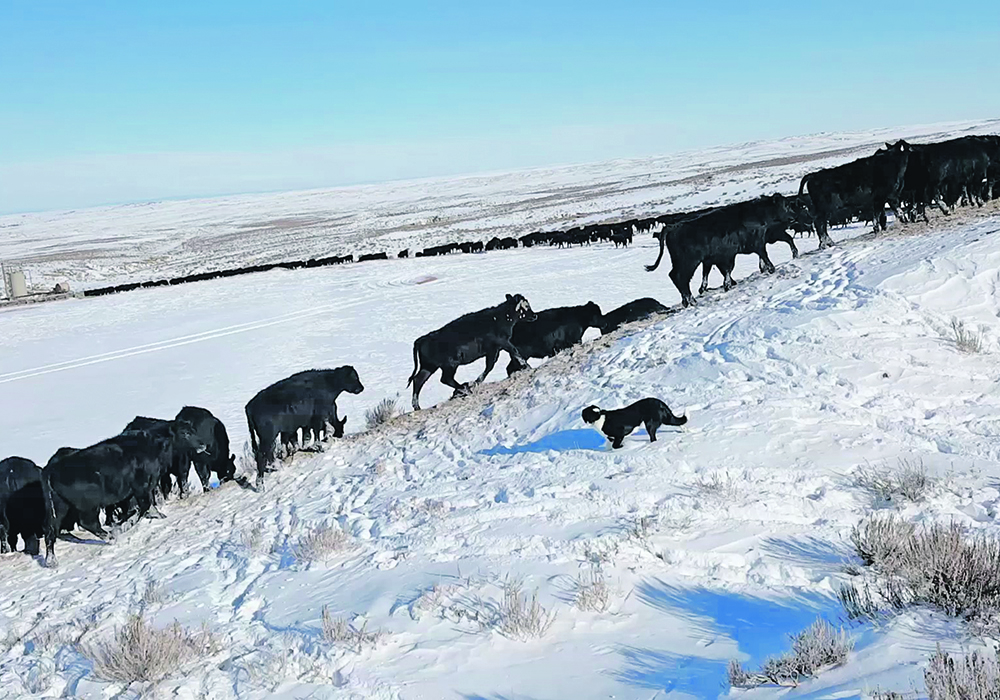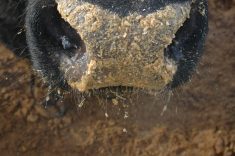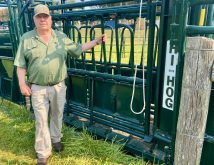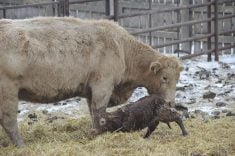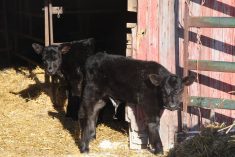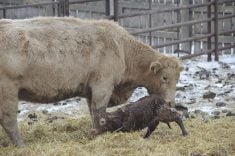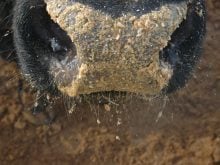Learning how to manage cattle as a herd the way nature intended allows producers to more easily move their animals
Cattle evolved as herd animals, grazing together as they moved. Domestication and confinement disrupted herd dynamics and only recently have people learned how to best manage them in pasture.
Rotational grazing was a start, followed by mob grazing. The latest but oldest management tool is instinctive migratory grazing.
Bob Kinford of Van Horn, Texas, gives seminars to show ranchers how they can rotationally graze large pastures or rangeland without electric fence or herders. It is similar to the way big herds graze on the African plains, staying together but moving slowly and grazing as they go.
“This is what people used to do with livestock,” says Kinford, but ranchers have moved away from it to instead rely on fences.
“Even with low stress cattle handling, what I do is a little different from what Bud Williams taught. Here on the Van Horn ranch, we have cattle grazing on pivots, acting as a herd. My ranch manager was a Bud Williams fan and we’d go out to move some cattle that were already acting as a herd and I’d say, ‘let’s go to the front and start them’ and he’d want to go back and forth across the back of the herd. But then the cattle would head off in different directions,” says Kinford.
“As a kid I wondered why goats and sheep act like a herd and cows scatter, then realized it’s because of how they’ve been handled. It took me decades of experimenting to discover that their natural instinct is to act as a herd, and this only happens when you remove the human-induced stress.”
Kinford noted that cattle tend to scatter as a defensive tactic when they see riders because they know they will be captive when gathered. Without that stress, they won’t try to scatter. However, handlers must work at the animals’ speed.
“Once you get them acting as a herd, all you have to do is get to the front and slow them to stop them where you want them. When you start them, you go to the front, and go against them and turn the front of the herd whichever direction you want them to go. They just line out and go,” says Kinford.
Riki and Justin Kremers ranch in eastern Wyoming. When Justin started out in 1998, he realized he couldn’t do things the way his family had done, calving in February and feeding hay all winter. He changed to May calving and year-round grazing.
“We got married in 2006, bought the 8,000-acre family ranch in 2007, and were continually trying to figure out ways to make it more productive,” says Riki. “We looked at intensive grazing, fencing big pastures into smaller paddocks.”
When Justin took over, the stocking rate was about 40 acres per cow and it is now about 25 acres per cow.
Permanent fenced pastures range from 70 to 1,000 acres and they increased available forage through better pasture use. Then, using instinctive migratory grazing, their stocking rate increased further.
In 2017, Riki joined a stockmanship group on Facebook and posted information on some of their non-traditional approaches, such as reclamation of shale badlands.
“We scattered old hay out there, bales the strings had rotted off, then brought in our 200 cows,” says Riki.
The cows had to be herded to make them use that area. They milled around, picked through the hay, ate a little and tromped the rest.
“When I told about what we were doing to reclaim the land, a guy in that group, Bob Kinford, said we needed to look into IMG. He told us we were basically doing it right but needed to do more with our cows.
“We were trying to bring our cattle together in a group, working as a herd, to get them to graze together and stay together, but we didn’t have it completely figured out. Then we rode into a pasture one day and saw a strip that looked like it had been mowed. The strip looked perfectly level, about four inches tall.
“We started seeing more incidences where the cattle had grazed as a group, leaving a perfect four-inch residual.”
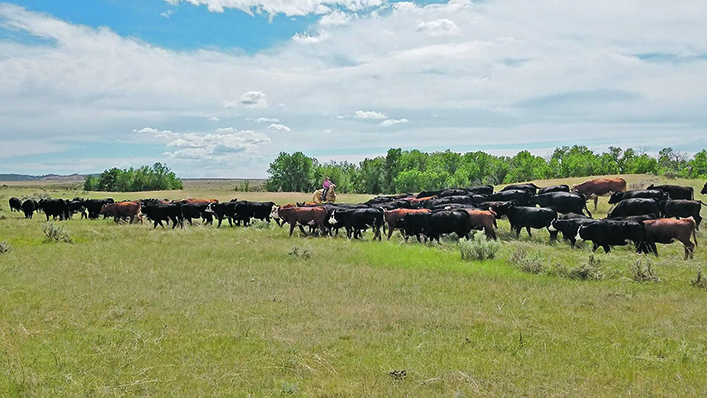
The Kremers asked Kinford to visit their ranch. He showed them the stockmanship tactics of starting cattle from the front rather than driving them from behind.
“As soon as we made that shift, using his techniques, it was a huge change. We now have a stocking rate of about 13 acres to the cow despite drought conditions the past two years,” says Riki.
“We’ve tripled our stocking rate, and this is with year-round grazing. The cattle stay in a tighter group if density and quality of the feed is high. As feed quantity and quality diminishes, like late fall and early winter, they spread out more loosely, but are still all moving the same way, grazing together as a herd.
“One day we moved a group of dry cows and yearling steers. We started them from the front and strung them past my father-in-law’s house and they never went onto his green lawn. This was during the drought and there was no green grass anywhere, but those cattle never even looked at his lawn. They trailed on by, trusting the herd mentality.”
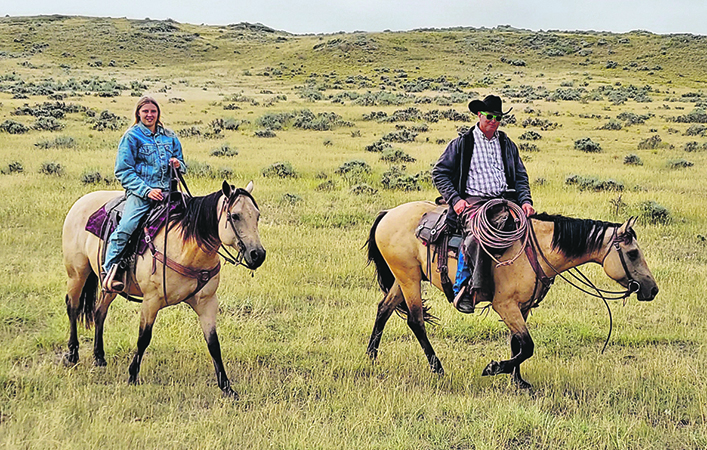
She said their cattle now make their way around pastures and graze whatever they choose. They are guided to graze on steep slopes or draws using the IMG technique.
“We often target Canadian thistle in August because they are high in protein. We put the cattle on a path that takes the whole herd through that area before they go somewhere else. When they leave, they have stripped all the thistle stalks and trampled most of them.”
A pasture might be grazed six different times in a year as different plants come into season that are palatable and nutritious.
“We can target cheat grass in early spring and go through as many cheat-grass infested pastures as we can,” says Riki.
“Then a bit later the crested wheat is coming up and they’ll eat some of that. Western wheatgrass is starting after that and the warm-season grasses haven’t begun to grow. So, we go through the pastures and let the cattle graze the early grasses and come back around for the later ones.”



